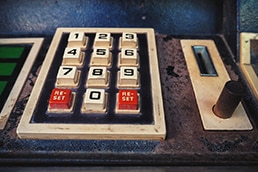Entirely beside the price point: How setting the wrong price structure might effectively ruin your chances for success
I just came back from a quick stop at a local bakery here. This bakery makes it a point that their „Mini-Krapfen“ cost 1.85 €. For measure: „Mini“ means precisely that – a so-called Krapfen but in a miniature version.
Market prices in Germany for a Krapfen in Munich area: A normal ‚Krapfen‘ would cost like 1.20 €, 1,40 € at most. So that is the standard sized one! In that bakery, however, and as you might guess already – the ‘normal’ Krapfen would cost 2,40! Twice the normal price.
So, in terms of marketing strategy that COULD work.
You‘d call that a premium price strategy and the Krapfen with that price tag is telling you:
„Hi there, I am super special and exclusive – that‘s why naturally I gotta cost 2,40 €. Twice the price, twice the fun!“
So far that still might work as long as
- the Krapfen is a good one,
- presented in combination with an exceptional customer experience like a super nice person behind the counter,
- some nice plates,
- lovely packaging to go with it…
The reality presented itself like that:
- there is a price promotion on the shelf „two for whatever still too absurd high price“
- the girl behind the counter is just mildly friendly
- the Krapfen pretty obviously is the same as offered at the next bakery
- the packaging / overall experience is just overall normal (btw: normal in comparison to a premium price will be perceived as ‚mediocre‘)
Let‘s zoom in on some of these aspects:
Why would the price promotion not work here?
Because if you as a customer are in the mood for premium, you want premium.
At that very moment, you don‘t want ‚Schnäppchen‘ (German for ‘bargain’).
If the bakery would indeed catch you in a moment where you‘re in the mood for a premium Krapfen, then you want to indulge in that.
You want to feel good about spending too much money for something as a way of spoiling yourself a bit.
From the bakery’s perspective, you would not want that willing customer to be reminded of such a thing as rational price perception.
You want the customer to not care about price and money anymore.
If you‘re in the mood for champagne, you want just that: Champagne that comes with a champagne price tag and a champagne experience.
If you position your Krapfen to be the Champagne among Krapfen, you‘ve got to stick with that strategy and be stringent about it.
Also, you should be aware that as soon as you rise the customer‘s expectation bar to Champagne level, you‘ve got to deliver champagne level.
The gap between expectation and facts
is also one of the reasons behind businesses experiencing too many complaining customers: Very often the perceived disbalance between price and offering is underlying this problem. If you don‘t tackle it from the roots, it will stick with you and your business, messing it all up. The cure is simple though: In cases like that, you must
- either lower the price bar or
- heighten the (perceived) offering value.
A similar effect also occurs for B2B pricing – very often a certain ‚price point‘ exists that should not be surpassed as anything beyond that point is beyond “price elasticity” (i.e. what the client is willing to pay). They represent much bigger lumps of turnover, still for B2B markets similar mechanics apply – tough that is a different story for another day.
How strategically did you set up the pricing structure for your company and its products/services?
Did you benchmark them vs competition respectively customer perception? Or are you maintaining some doubts about price points in your business – if so – which/why?





Leave a Reply